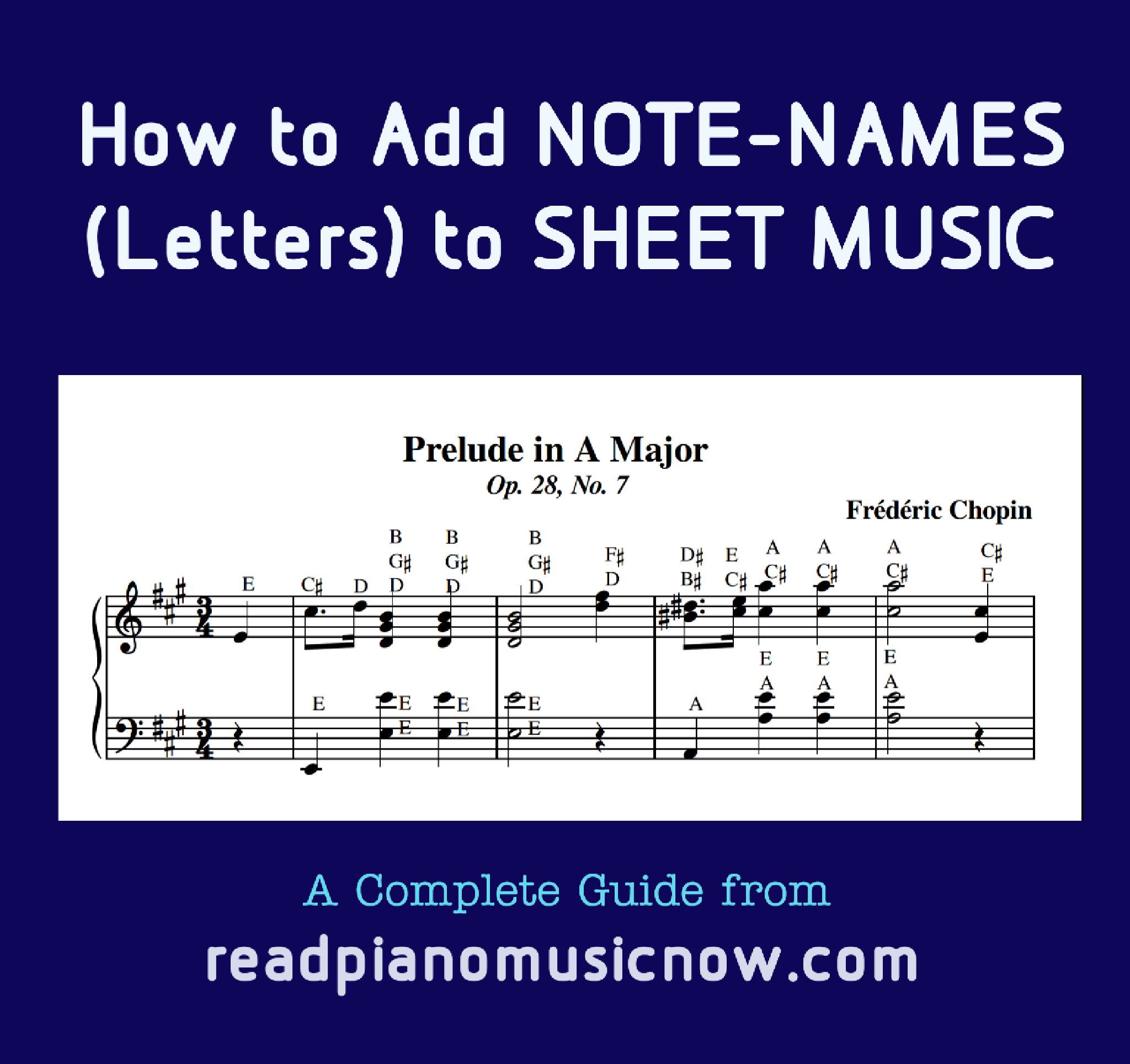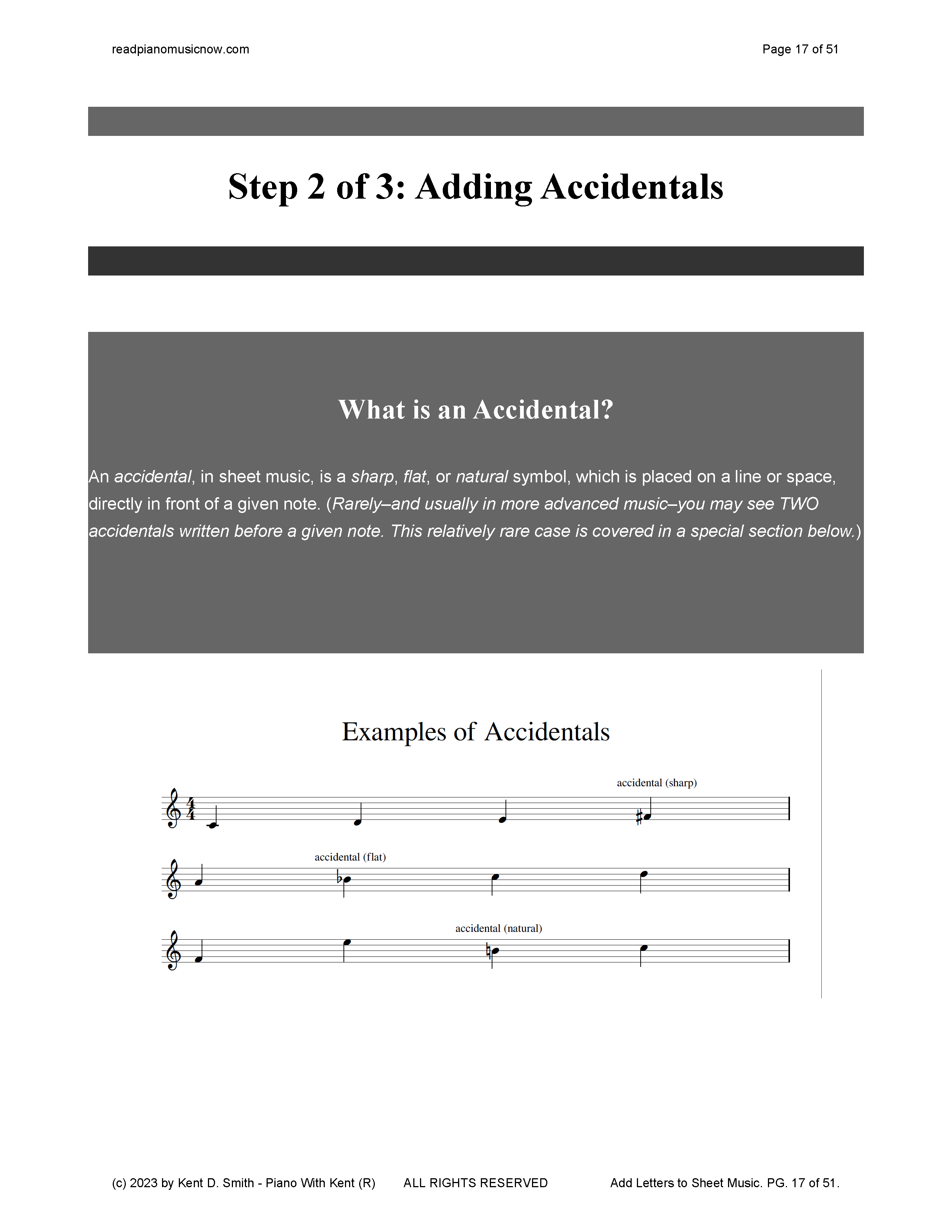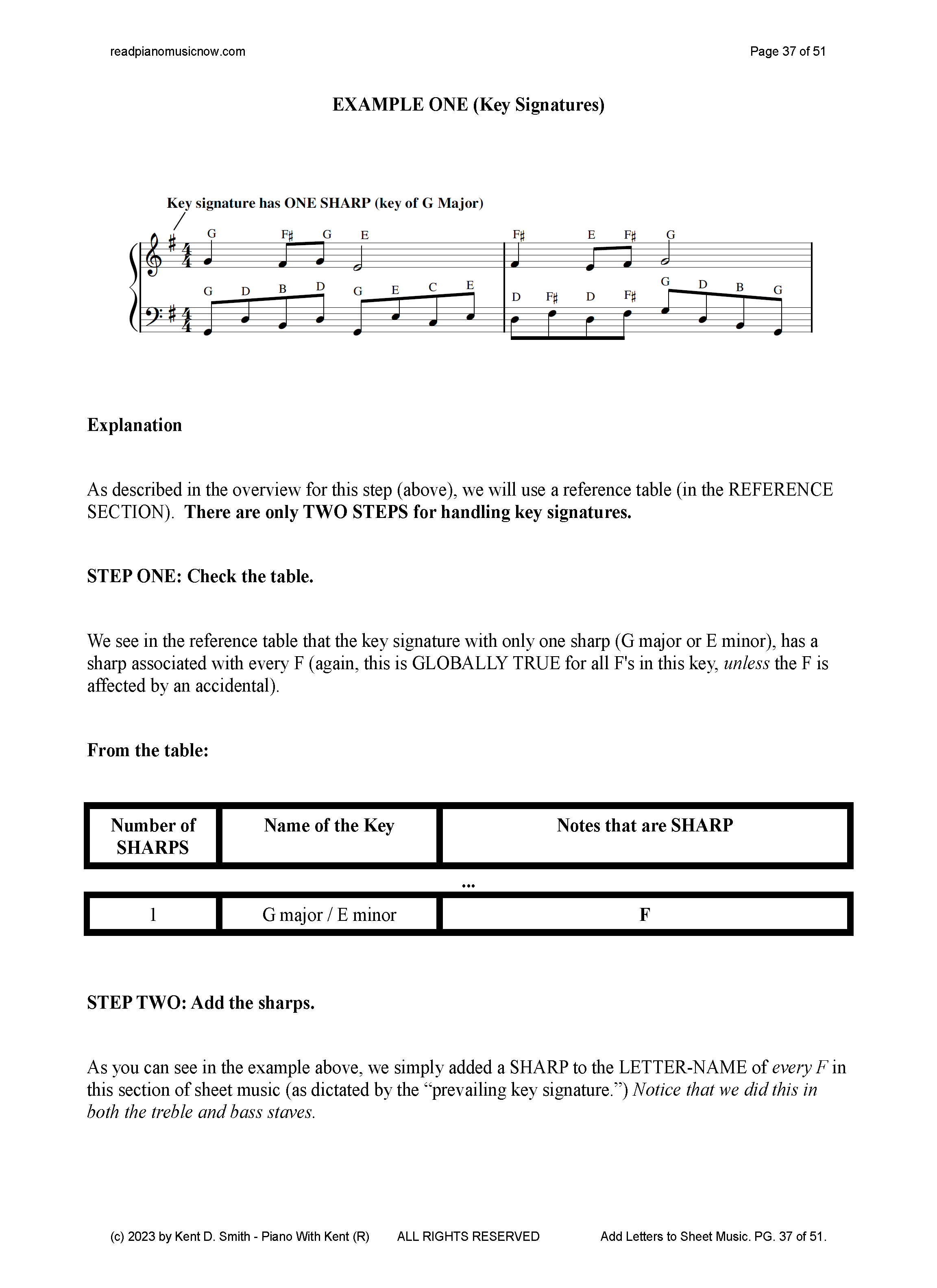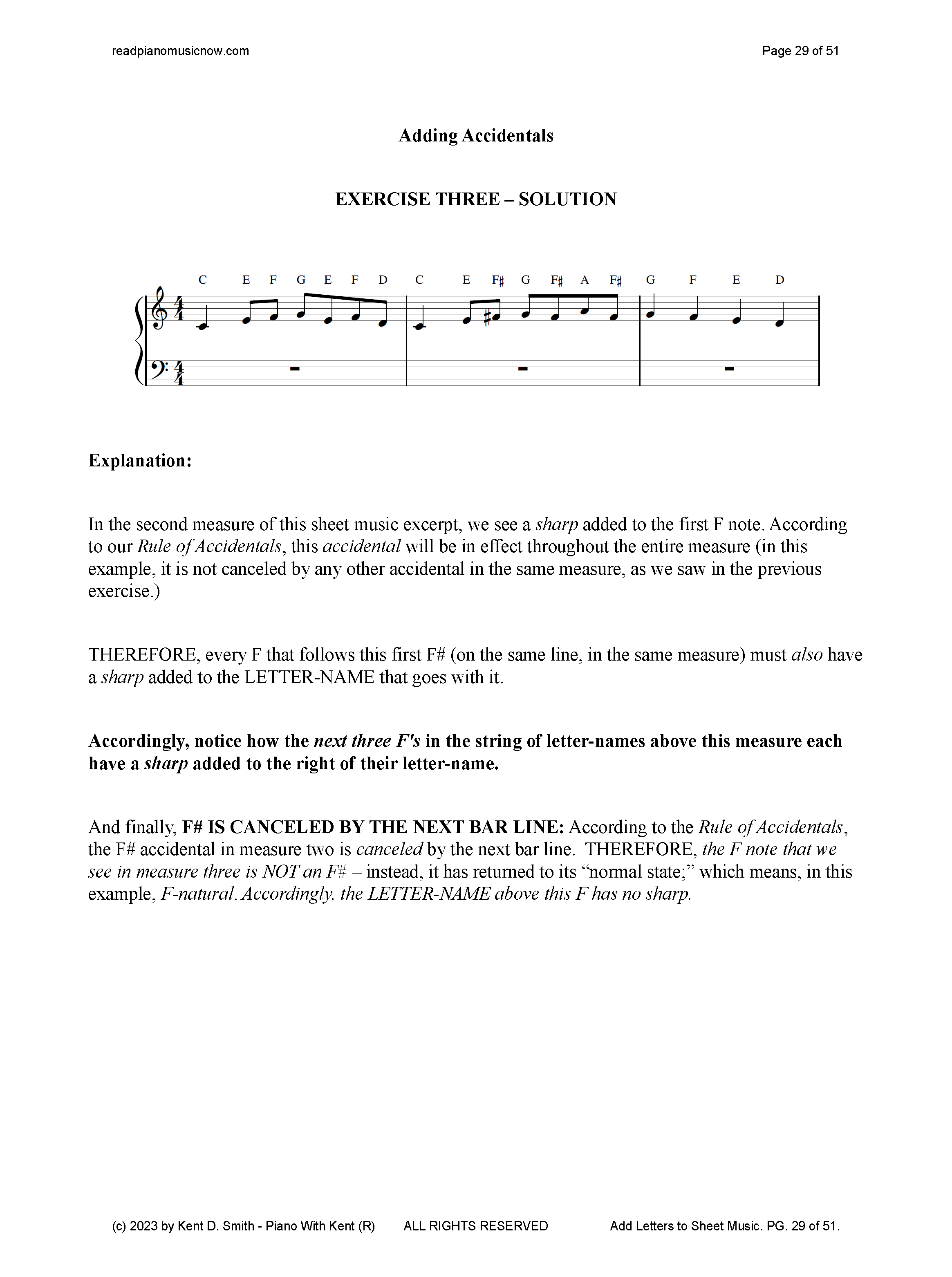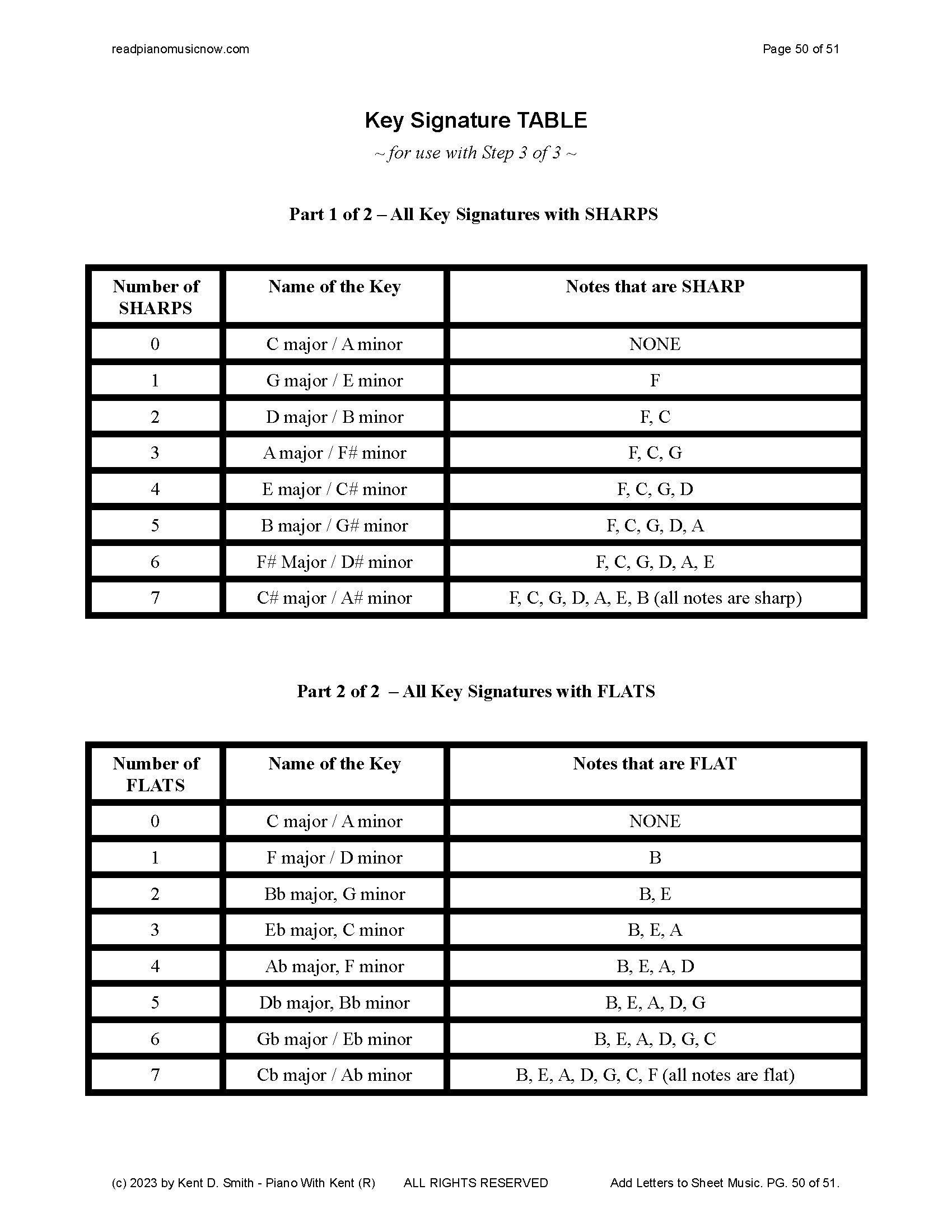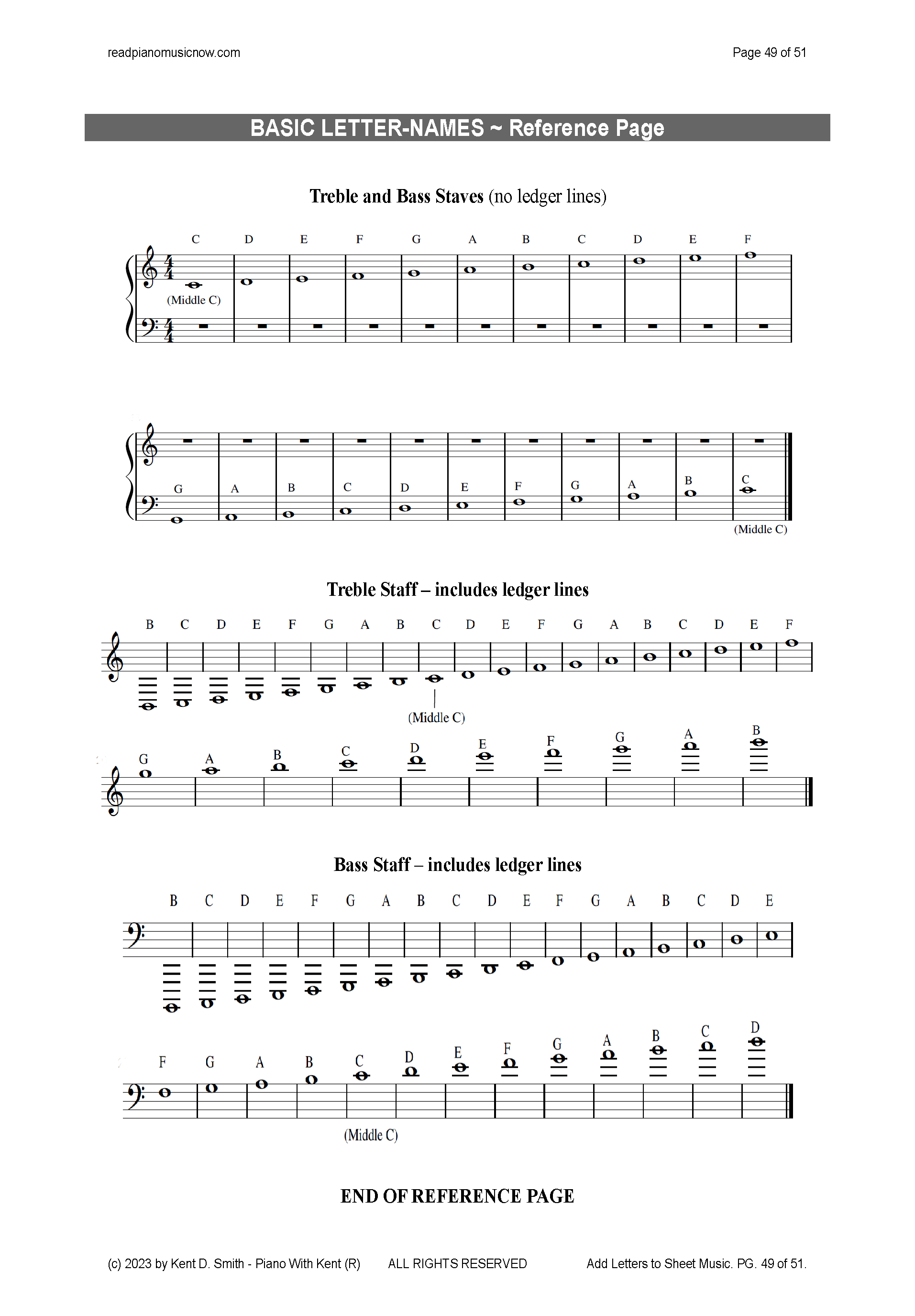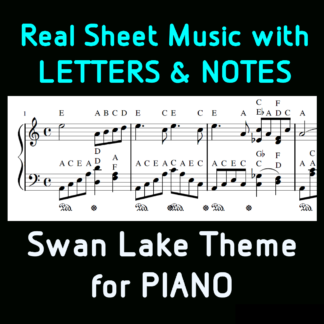Description
Visit our Sheet Music With Letters online store here!
How to Add Note-Names (Letters) to Sheet Music
With a Focus on Piano
CURRENTLY AVAILABLE IN ENGLISH ONLY
For a complete description of how this book is organized, how it can be used, and exactly what it covers, please see the entire Introduction and Overview below, which is taken directly from the book.
PRODUCT:
One downloadable, printable PDF file. 51 pages total.
From the book (Introduction and Overview Section)
Introduction – What is this Book about, and Who is it For?
Simply stated, this book will teach you how to properly name ANY NOTE, on ANY piece of sheet music for piano. This also applies to any instrument that uses either the treble (upper) or bass (lower) staves, or both.
Armed with this knowledge, you can pick up any piece of sheet music for piano, and label every single note, with its proper (musically correct) letter-name. This includes all sharps, flats, and naturals.
Primary Audience
In my decades of professional experience in teaching piano, I’ve had many older students who are returning to piano, and who are very interested in relearning the details of reading traditional sheet music – often with the goal of relearning the pieces they loved to play, back when they were taking private lessons as a child, teenager, or younger adult.
In general, these people already know the basic concepts of reading music – however, what follows are some of the areas that often need much refreshing, all of which are covered in these pages:
-
The basic letter-names, for all notes, as they appear on sheet music (A, B, C, D, E, F, and G) covering all the lines and spaces on both staves, including ledger lines (lines and spaces that are above or below the staff).
-
Interpreting the key signature (this is a big one).
-
Interpreting accidentals (sharps, flats, and natural signs, which are added to notes within a specific measure, and follow certain rules of interpretation). This knowledge includes the more rare cases of “double sharps” and “double flats.”
In this book, you will get a detailed refresher on all of that. Essentially, the focus here is on knowing the proper name of any note on the page (such as F#, C, Db) – as directed by the key signature, and/or by any accidentals. This book has a laser focus on the bullet points above.
There are many other types of pianists and musicians who can also benefit from this knowledge. These groups I will discuss further below.
But first, let’s talk about the elephant in the room:
Is it a “good” or “bad” thing to add letter-names to sheet music?
As you might expect: The answer to this question depends entirely on what you are trying to accomplish.
The subject of marking up sheet music with letter-names can be a controversial one, among teachers especially. And, I will say right up front, if you are currently taking piano lessons, and/or you want to become a fluent reader of sheet music in general, I generally do NOT recommend relying on added letter-names.
But again, this question depends on your long-term goals! The people in the primary audience for this book, which I mentioned further above — as well as many other types of students and musicians — may not fit into the category that I just described (a music student who wants to become a great reader).
A partial list of other people who CAN benefit from the knowledge herein
People who:
-
Can not afford private lessons.
-
Have no available teacher.
-
Can not travel to a teacher.
-
Play mostly by ear; and who also may not be interested in becoming a fluent music reader.
-
Have any number of learning or memory challenges.
-
Want to play their favorite pieces again, without so much fuss (my primary audience).
-
Have any number of visual challenges.
-
Simply want to know how to name any note on a page of music. This might include singers, guitarists, drummers, etc., and also composers, academics, or the just plain curious!
Overview of this book
This book describes, in detail, a basic THREE-STEP PROCESS, for properly naming any note on any standard piece of Western sheet music (treble and bass staves only, as we find in music for piano, and most other common instruments, as well as sheet music for voice.)
Each of these three steps has its own major section, and these sections are presented in the suggested order for marking up sheet music with letter-names.
Each section includes multiple examples and practice exercises. Each exercise is followed by its correct solution, along with a detailed explanation of what was done.
In Step 1 of 3 – Adding BASIC LETTER-NAMES, you will learn how to add all the BASIC LETTER-NAMES to your copy of the sheet music (these are, in a nutshell, any of the seven letters of the basic musical alphabet, which are the letters A though G, without yet adding any sharps or flats).
In Step 2 of 3 – Adding ACCIDENTALS, you will acquire a detailed and complete understanding of how to respond to accidentals (these are sharps, flats, and natural symbols that appear within a given measure, and which override the key signature). Accidentals follow certain rules, as regards all affected notes, which may follow the appearance of the first accidental (for a given note). These rules are covered thoroughly in this Step 2 of 3.
Finally, in Step 3 of 3 – KEY SIGNATURES, you will learn how to go back through the entire sheet, and add all the required sharps or flats, to any of the letter names that are affected by the prevailing Key Signature.
How to Use This Book
-
I recommend that you mark up your sheet music according to the order in which these Three Steps are presented.
-
I also recommend that you do all the practice exercises! It’s one thing to read something, and believe that you understand it, and yet another thing to actually do it, and to receive feedback as to the correctness of your work.
-
When marking in your letter-names, I recommend using a pencil.
END OF BOOK EXCERPT – SEE PRODUCT IMAGES FOR MORE INSIGHTS
